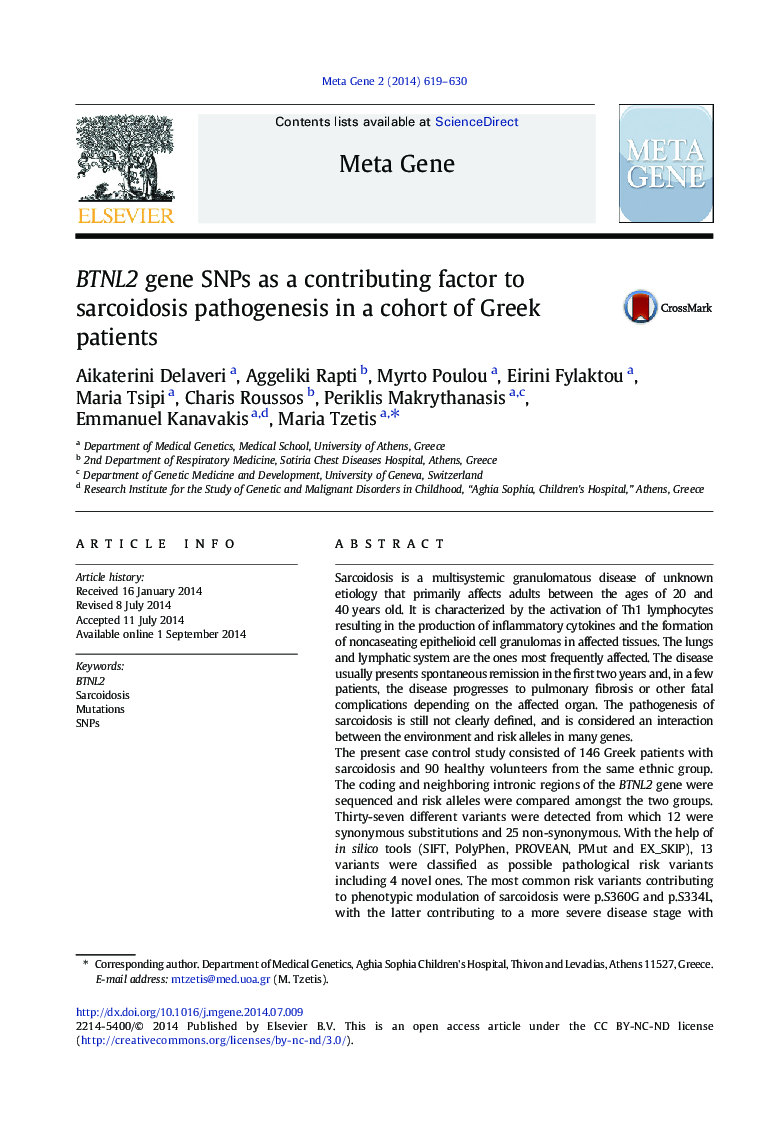| کد مقاله | کد نشریه | سال انتشار | مقاله انگلیسی | نسخه تمام متن |
|---|---|---|---|---|
| 2058519 | 1543963 | 2014 | 12 صفحه PDF | دانلود رایگان |

• Thirteen pathological risk variants were discovered in BTNL2 gene in sarcoidosis patients.
• The common risk variant p.S360G was found in cases (37.67%) and controls (30%).
• The 2nd most common variant p.S334L was found in cases (16.43%) and controls (12.22%).
• Six novel variants were detected with 4 deemed pathological.
• Coinheritance of common and novel variants affected the final clinical phenotype.
Sarcoidosis is a multisystemic granulomatous disease of unknown etiology that primarily affects adults between the ages of 20 and 40 years old. It is characterized by the activation of Th1 lymphocytes resulting in the production of inflammatory cytokines and the formation of noncaseating epithelioid cell granulomas in affected tissues. The lungs and lymphatic system are the ones most frequently affected. The disease usually presents spontaneous remission in the first two years and, in a few patients, the disease progresses to pulmonary fibrosis or other fatal complications depending on the affected organ. The pathogenesis of sarcoidosis is still not clearly defined, and is considered an interaction between the environment and risk alleles in many genes.The present case control study consisted of 146 Greek patients with sarcoidosis and 90 healthy volunteers from the same ethnic group. The coding and neighboring intronic regions of the BTNL2 gene were sequenced and risk alleles were compared amongst the two groups. Thirty-seven different variants were detected from which 12 were synonymous substitutions and 25 non-synonymous. With the help of in silico tools (SIFT, PolyPhen, PROVEAN, PMut and EX_SKIP), 13 variants were classified as possible pathological risk variants including 4 novel ones. The most common risk variants contributing to phenotypic modulation of sarcoidosis were p.S360G and p.S334L, with the latter contributing to a more severe disease stage with extra-pulmonary manifestations such as skin granulomas and relapses being more common.
Journal: Meta Gene - Volume 2, December 2014, Pages 619–630